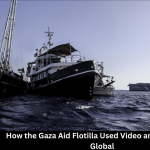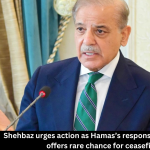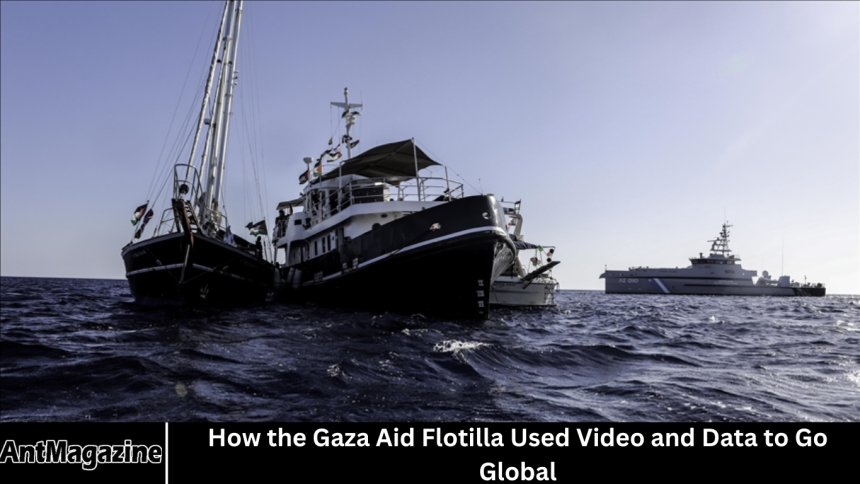In the early hours of May 31, 2010, in international waters 72 miles off the coast of Gaza, a routine naval interception transformed into a global media event. The Israeli military boarded the Mavi Marmara, the lead ship of the “Gaza Freedom Flotilla,” resulting in a violent clash that left nine activists dead.
- The Stage: The Gaza Blockade and the Flotilla’s Mission
- The Pre-Launch Strategy: Seeding the Narrative
- The Arsenal: Cameras as the Primary Weapon
- The Raid: A Global Broadcast in Real-Time
- The Data War: Corroborating the Story
- The Aftermath: A Diplomatic Firestorm
- The Legacy: The Flotilla Model of Digital Activism
- Frequently Asked Question
- What was the main goal of the Gaza Flotilla’s media strategy?
- What specific technologies did they use to document the event?
- How did live video change the dynamics of the incident?
- What role did data play beyond the dramatic video footage?
- Weren’t the Israeli jammers successful? How did footage still get out?
- What was the real-world impact of this digital strategy?
- How did the Flotilla’s approach change modern activism?
- Conclusion
While the tragedy itself was shocking, the ensuing global firestorm was not a matter of chance. It was the direct result of a meticulously executed media and data strategy.
The 2010 Gaza Flotilla did not just carry humanitarian aid; it carried cameras, satellite phones, and a plan to bypass traditional media gatekeepers. This is the story of how a coalition of activists used video and data to win the battle for global public attention.
More Read: Shehbaz urges action as Hamas’s response to Gaza plan offers rare chance for ceasefire
The Stage: The Gaza Blockade and the Flotilla’s Mission
To understand the flotilla’s impact, one must first understand the context. Since 2007, following Hamas’s takeover, Israel and Egypt had imposed a strict blockade on the Gaza Strip.
The blockade severely restricted the flow of goods, crippling the economy and leading to widespread humanitarian concerns.
The “Gaza Freedom Flotilla”—a coalition of six ships organized by the Free Gaza Movement and the Turkish Foundation for Human Rights and Freedoms and Humanitarian Relief (IHH)—was conceived as a direct challenge to this blockade. Its stated mission was to deliver humanitarian supplies and break the isolation of Gaza.
But its unstated, equally critical mission was to generate global awareness. The organizers knew they couldn’t match the military might of the Israeli Defense Forces (IDF). So, they chose to fight on a different battlefield: the screen.
The Pre-Launch Strategy: Seeding the Narrative
The media campaign began long before the ships set sail.
-
Building a Digital Footprint: The flotilla’s organizers established a strong online presence with dedicated websites, blogs, and social media accounts. They used these platforms to articulate their mission, introduce the diverse group of activists on board (including politicians, journalists, and elders), and document the loading of “non-violent” supplies like medical equipment and school supplies.
-
Framing the Story: The narrative was carefully framed around “civil society vs. military power” and “humanitarian aid vs. blockade.” This simple, powerful framing was designed to be easily grasped by international audiences and media outlets.
The Arsenal: Cameras as the Primary Weapon
Aboard the Mavi Marmara and other vessels was an arsenal of digital recording equipment. This was not left to chance; it was a core part of the strategy.
-
Multi-Platform Recording: Activists were equipped with a range of devices—from professional broadcast cameras to consumer-grade handheld camcorders and early-generation smartphones. This ensured that multiple angles of any incident would be captured, even if some equipment was seized or destroyed.
-
Pre-Configured Live Streams: The ships were equipped with satellite internet systems, allowing for near-live streaming. While the primary satellite link was reportedly jammed by Israeli forces just before the raid, activists had prepared for this. They had pre-configured systems to transmit the moment the IDF commandos descended onto the ship.
-
The “Data Lifeboat”: Perhaps the most ingenious tactic was the use of a “data lifeboat”—a system where video footage was automatically and continuously uploaded to remote servers. Even if the physical devices were confiscated, the data would already be safe in the cloud, beyond the reach of any military. This ensured the evidence could not be suppressed.
The Raid: A Global Broadcast in Real-Time
When the IDF helicopters appeared over the Mavi Marmara, the flotilla’s strategy was put to the ultimate test. What happened next was a paradigm shift in conflict coverage.
-
The First Images: The first grainy, shaky videos emerged almost immediately. They showed black-clad Israeli commandos fast-roping onto the deck of a civilian ship in international waters. The visual was instantly provocative and dominated global news cycles.
-
The Power of Raw Footage: Unlike a polished news report, this raw, unedited footage felt authentic and unfiltered. It showed the chaos, the sounds of stun grenades, and the confrontation. This visceral authenticity bypassed the “spin” that often follows such events and allowed viewers to feel as if they were witnessing history unfold firsthand.
-
Controlling the Initial Narrative: Because the flotilla’s footage was the first to reach the world, it established the initial framework for the story. The IDF, a highly sophisticated military with its own media unit, was put on the defensive, forced to react to the activists’ narrative rather than control its own.
The Data War: Corroborating the Story
While video provided the emotional punch, data provided the credibility. The flotilla and its supporters used digital information to corroborate their account and challenge the Israeli narrative.
-
Satellite Data and Mapping: Within hours, activists used public satellite data and mapping tools like Google Earth to chart the flotilla’s exact course, proving it was in international waters at the time of the interception. This was a critical data point that countered any suggestion the raid was a lawful enforcement of a coastal blockade.
-
Timeline Analysis: Supporters on land collaborated to compile detailed timelines of the event, syncing the flotilla’s video footage with official IDF statements and radio communications. This crowdsourced forensic analysis helped identify inconsistencies and kept media scrutiny focused.
-
Social Media as a Wire Service: Twitter and Facebook became the new wire services. The flotilla’s official accounts, along with activists and NGOs, provided a constant stream of updates, witness accounts, and newly emerged footage. The hashtag #GazaFlotilla became a global trending topic, creating a decentralized news network that was impossible to shut down.
The Aftermath: A Diplomatic Firestorm
The fusion of compelling video and verifiable data created an undeniable political force.
-
Global Condemnation: The footage triggered widespread international condemnation and protests from Europe to the Middle East to Asia. The United Nations Security Council convened an emergency session.
-
Strained Relations: The incident caused a severe diplomatic crisis between Israel and Turkey, previously its closest Muslim ally. Relations were downgraded for several years.
-
Shifting the Debate: While the physical blockade on Gaza remained, the flotilla successfully shifted the international conversation. It placed the humanitarian situation in Gaza squarely on the front pages and forced governments to publicly address the issue. The pressure ultimately led Israel to ease some restrictions on the import of civilian goods.
The Legacy: The Flotilla Model of Digital Activism
The 2010 Gaza Flotilla provided a blueprint for modern humanitarian and political activism. It demonstrated several enduring lessons:
-
The Camera is a Potent Tool of the Weak: It allows non-state actors to project power, hold state militaries accountable, and level the informational playing field.
-
Data is a Form of Evidence: Raw data—be it GPS coordinates, timestamps, or satellite imagery—can be weaponized to build an irrefutable case and lend scientific credibility to a narrative.
-
Decentralize to Survive: By ensuring multiple people had multiple copies of data, and by using cloud-based “data lifeboats,” the flotilla made its evidence seizure-proof.
-
Bypass the Gatekeepers: Social media and live streams allow activists to speak directly to the global public, circumventing traditional media filters and potential biases.
Frequently Asked Question
What was the main goal of the Gaza Flotilla’s media strategy?
The primary goal was to bypass traditional media and government narratives to control the story directly. The organizers knew they couldn’t win a military confrontation, so they focused on winning the “media war.” Their strategy was to use live video and data to frame the event as a humanitarian mission being confronted by military force, ensuring the world would witness the event unfold from their perspective in near real-time.
What specific technologies did they use to document the event?
The flotilla was equipped with a multi-layered technological arsenal:
- Multiple Recording Devices: A mix of professional broadcast cameras, consumer camcorders, and smartphones ensured footage would be captured from many angles even if some devices were seized.
- Satellite Internet: This allowed for live streaming and real-time communication from the middle of the Mediterranean Sea, far from land-based networks.
- “Data Lifeboats”: This was a crucial tactic where video footage was continuously and automatically uploaded to remote cloud servers. This meant that even if Israeli commandos confiscated all physical devices, the evidence was already safe and accessible to the world.
How did live video change the dynamics of the incident?
Live and near-live video fundamentally shifted the narrative control. Instead of relying on official statements from governments or polished news reports, the world saw raw, shaky, and visceral footage of commandos rappelling onto a civilian ship in international waters. This authenticity created an immediate and powerful emotional impact, putting the Israeli military on the defensive and forcing them to react to the flotilla’s narrative from the very beginning.
What role did data play beyond the dramatic video footage?
While video provided the emotional punch, data provided the credible, factual backbone that made their narrative harder to dismiss:
- Verifying Location: Activists and supporters used GPS and satellite data (like Google Earth) to publicly chart the flotilla’s exact coordinates, proving it was in international waters and countering claims about the legality of the interception.
- Crowdsourced Analysis: Online, people synced the flotilla’s footage with timestamps and official statements, creating detailed forensic timelines that highlighted inconsistencies.
- Social Media as a Newswire: Platforms like Twitter and Facebook acted as a decentralized news network, spreading updates, witness accounts, and new footage instantly under hashtags like #GazaFlotilla, making the story impossible to contain.
Weren’t the Israeli jammers successful? How did footage still get out?
While the Israeli military successfully jammed the flotilla’s primary satellite internet link to prevent a stable live stream, the strategy of the activists anticipated this. The “data lifeboat” concept meant that footage was being uploaded in packets whenever a connection was available. Furthermore, the multiple recording devices meant that even with the main link down, footage was preserved on memory cards and some was transmitted in bursts. The jamming delayed, but could not fully prevent, the digital evidence from getting out.
What was the real-world impact of this digital strategy?
The global outcry generated by the video and data had significant diplomatic and political consequences:
- International Condemnation: It triggered widespread protests and forced an emergency session of the UN Security Council.
- Diplomatic Crisis: It severely damaged the relationship between Israel and Turkey, leading to a years-long diplomatic rift.
- Policy Shift: While the blockade was not lifted, the intense international pressure forced Israel to significantly ease restrictions on the import of civilian goods into Gaza shortly after the incident.
How did the Flotilla’s approach change modern activism?
The 2010 Gaza Flotilla became a blueprint for digital activism. It demonstrated that:
- Technology is a power equalizer: Small, under-resourced groups can challenge powerful state actors by leveraging cheap, accessible technology.
- Decentralization is key: By having multiple people with multiple devices and using cloud storage, you make your evidence seizure-proof.
- The Battlefield is Digital: It proved that public opinion is often shaped on digital platforms, making a strong video and data strategy as important as the physical act of protest itself. This model has been adopted by movements worldwide.
Conclusion
The 2010 Gaza Flotilla was a tragic event with loss of life, but it was also a watershed moment in media history. It proved that in the 21st century, the most powerful weapon in a conflict is not always a bullet; it can be a pixel.
By strategically combining the emotional resonance of live video with the hard proof of data, a small group of activists ignited a global crisis and reshaped a diplomatic landscape.
















